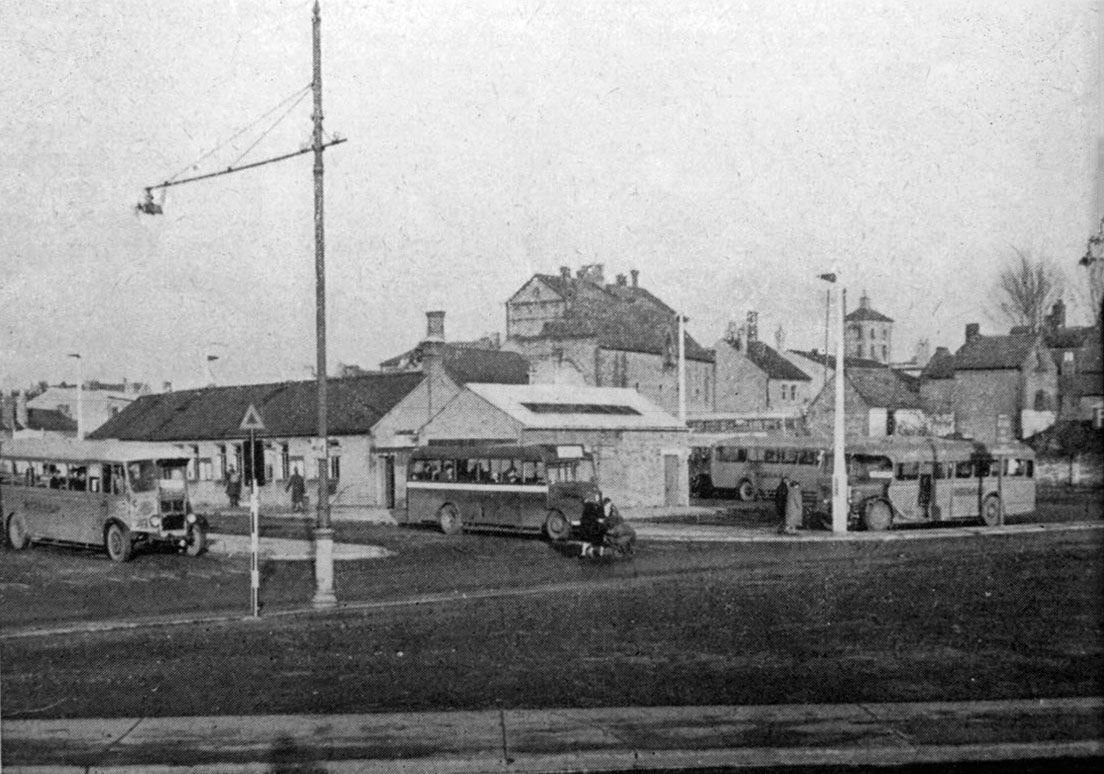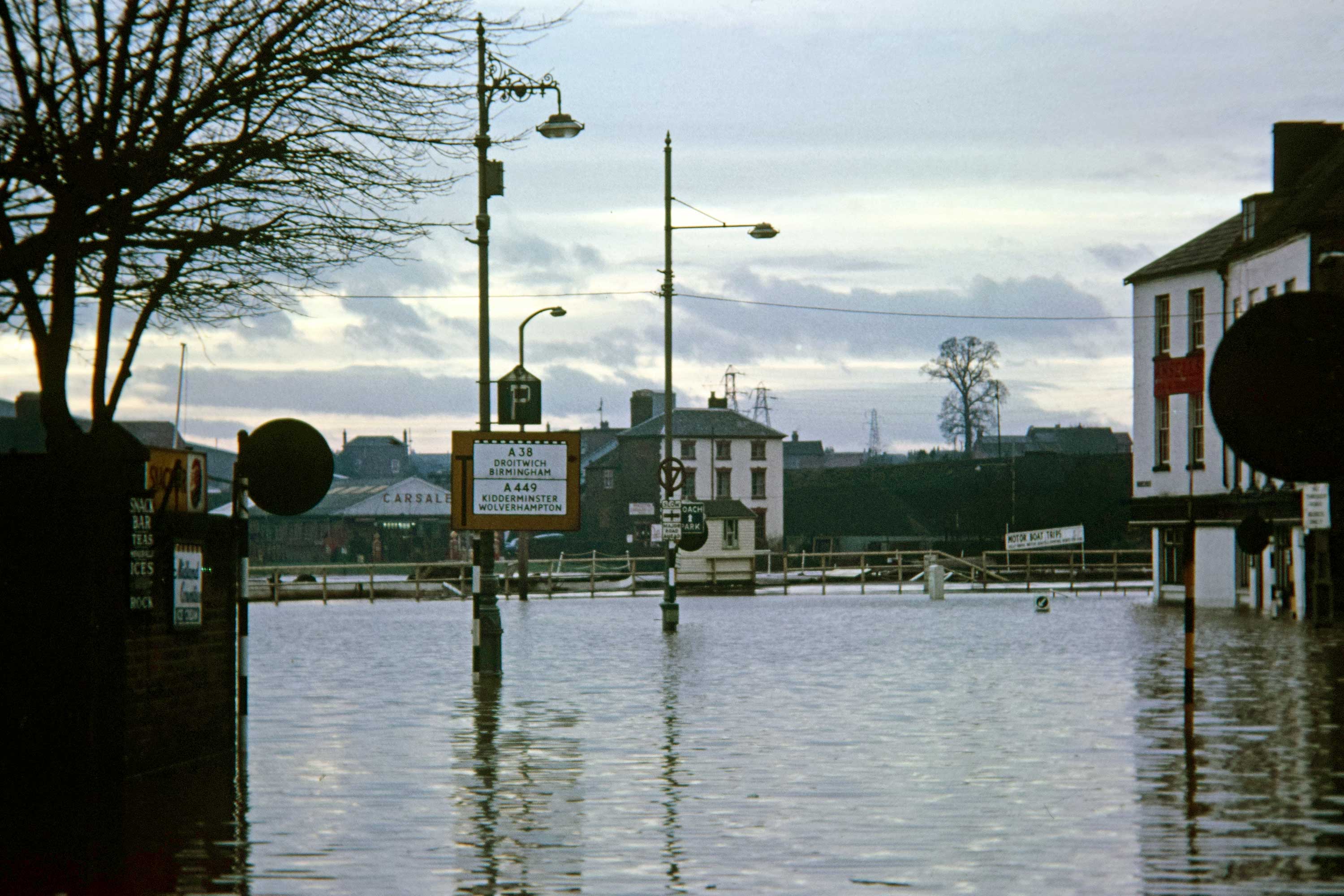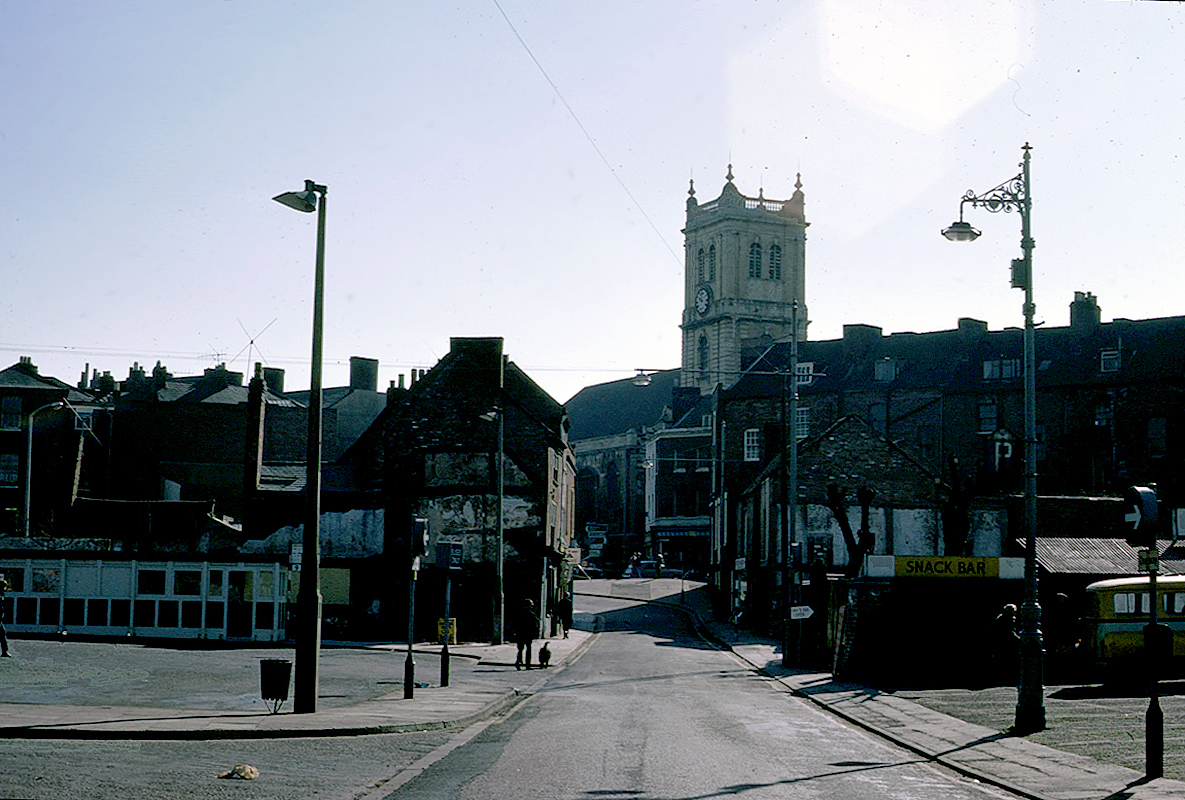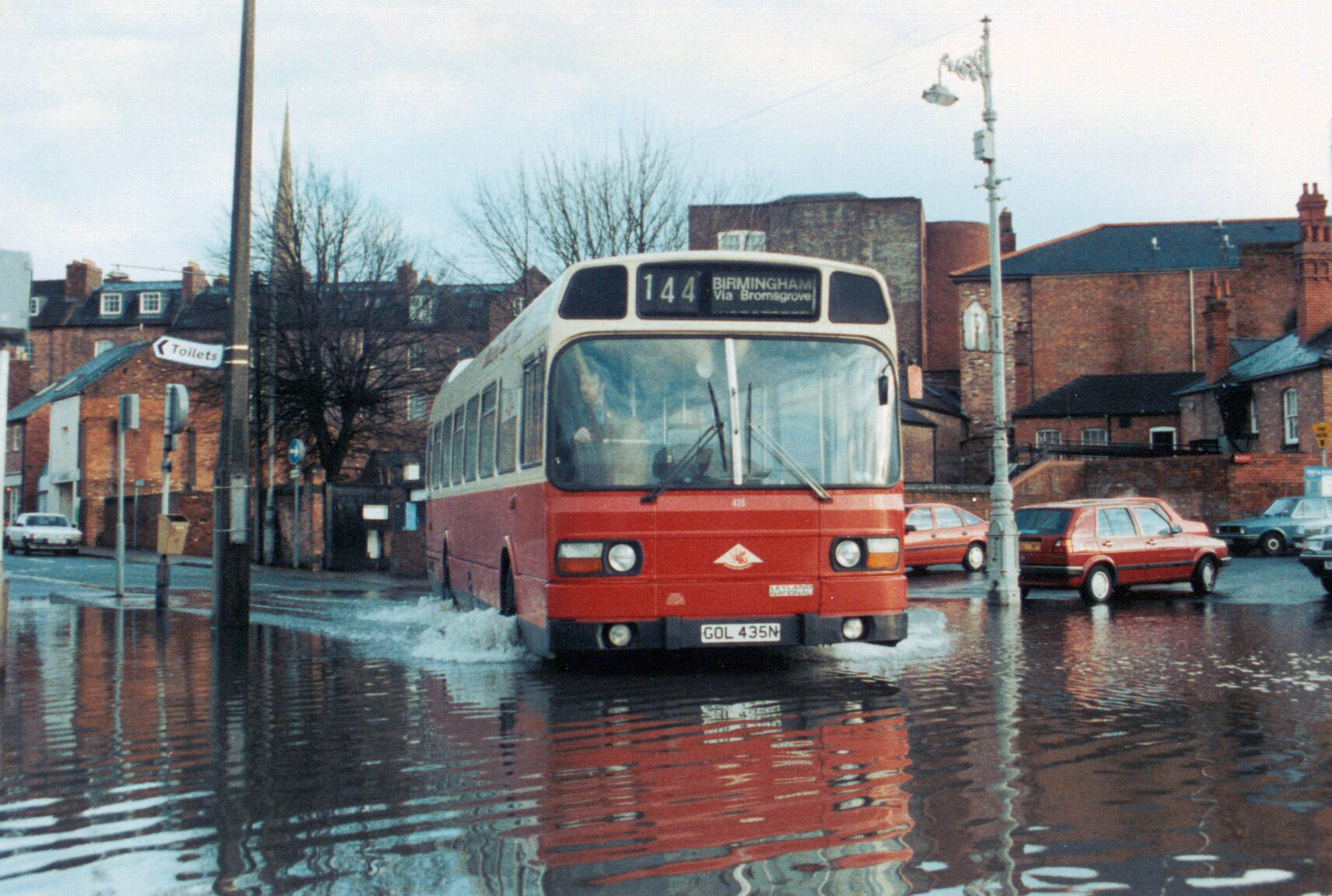173AA. Newport Street, Worcester Located between two car parking areas are a couple of 25 ft (8 m) cast iron columns, with one of the two being particularly notable in that it supports a 1950s' top-entry GEC 'Dioptrion' Z8431 lantern. These lanterns were designed to run 250 - 400 Watt medium pressure mercury vapour (MA) lamps, most of which could be run vertically (cap-up) only, owing to horizontal burning causing the glass arc tubes to soften, and eventually, break. A magnetic arc deflector housed within the lantern allowed the lamp to be operated horizontally, however, allowing for a more efficient light distribution. By the 1960s, high pressure mercury (MB) technology had improved, and had become more affordable, with MA lamp production being discontinued within the decade. With these lamps employing quartz arc tubes, a universal burning position was introduced, removing the need for external arc deflectors. Lantern technology had evolved by then too, with the "Double-Dish" (as early versions were known) glass design of the Dioptrion giving way to full aluminium canopies and plastic bowls. Today, the lamp fitted in this lantern is unknown, although it could be a high pressure sodium (SON) lamp instead.
Although both columns are ornate, the column supporting the Dioptrion is the more elaborate out of the two, and is likely to have supported a carbon arc lantern originally.
An assortment of couplers connect the lantern to the bracket.
Part of the sealing gasket, which should be attached to the central aluminium support ring, has detached, and is visible in the lowest portion of the bowl. Despite this, the lantern appears relatively clean internally.
The wiring for the lantern, as well as the two-part photocell detector (a Zodion SS54 type) exits the back of the bracket, and passes down into a later fuse / control gear box that is strapped to the column shaft.
The whole installation is very much from a bygone era, with the modern cars and buildings to the left adding to its historical appearance. Surprisingly, it does not carry any listed status.
The two dark patches visible on the lantern's canopy are grub screws that would secure a bracket on side-entry versions of the Dioptrion. As this is top-entry, the side-entry aperture is blanked off.
Every part of the column and bracket is decorated with embellishments, as is typical of Victorian structures - I can imagine the arrival of the Dioptrion in the 1950s being disliked by some, with comments being made that it wasn't in-keeping with the style of the structure. Somewhat ironically, in the modern era, if the Dioptrion were to be replaced with a generic teardrop 'heritage'-style lantern, this would be even worse, to my mind!
With the disused side-entry connection being at the front of this lantern, by rights, it is facing backwards, though as the refractor bowl features a symmetrical pattern, this is not an issue.
The column features a base compartment, with its door being secured by a modern cylinder lock. The Worcester Coat of Arms is cast into the door, complete with the Latin motto "Civitas In Bello Et Pace Fidelis" - "In war and peace, a faithful city".
Two ladder bars are cast into the column too. In the days of carbon arc lighting, these would have seen frequent use, as the carbon rods used in producing the arc glow burnt out quickly, requiring regular replacement.
A small bracket, now disused, is attached to the rear of the column. Its possible use is explored with the second column.
The photocell provision was probably installed in the 1980s, as a replacement for time switch control.
Also attached to this column is a vintage enamel car parking sign, complete with the older logo for the RAC - the Royal Automobile Club. The old maintenance number plate - 2053 - is visible here too.
As mentioned above, while the second column is still "old", it is less decorative than the first is, which may indicate that it is a newer product.
A TRT Aspect LED lantern is fitted here these days, with its predecessor being a Philips SGS 203. A third vintage column, located further up Newport Street, retained its SGS 203 when these pictures were taken, in December 2022.
More brackets are attached to the column shaft - one retains (what appears to be) a circular electrical insulator, suggesting that the column supported overhead wiring in the past. With the car park over the road having been a bus station until the 1990s, the overhead conductors may have been for trams (Worcester did not have a trolleybus system), although these were disbanded in 1928. Notice that there is damage to the ornate collar that is situated between the sets of brackets.
Some more images of the Dioptrion installation through the years are displayed below, courtesy of various online sources. The first three are supplied courtesy of the Changing Face of Worcester project.
This 1946 view of the bus station shows the column that, today, supports the TRT Aspect, on the left, and on the extreme right, the lantern fitted to the column that would go on to support the Dioptrion. The picture resolution prevents the lanterns fitted at the time from being identified clearly, although the GEC lanterns must have arrived later. The bus station can be seen to be lit with Benjamin Duoflux 'shovel' floodlights (or a similar rival product) mounted post-top to concrete columns.

This 1965 image, taken by Alwyne James, shows the installation amid a rather large expanse of water - the River Severn having burst its banks, and flooded the adjacent roadways. The column that supports the Aspect in the modern era, as well as a concrete column in the background, all ran Dioptrions at the time too. Notice that the bracket on the later column has been replaced since the picture above was taken, and that this column is being used to carry an overhead cable; albeit, possibly, a telephone cable, as opposed to a mains supply type.

Looking the other way in an altogether drier 1971, another (now removed) column with a long outreach is visible, along with the remaining column in the distance that runs an SGS 203 in the modern era.

Here, Midland Red West Leyland National 435 (GOL 435N) negotiates yet more floodwater on the approach to the bus station in February 1990, with the concrete columns seen in 1946 continuing to provide support for the station's lighting. This image is copyright Chris Sampson; the original is viewable on his Flickr account, here.

BACK TO SURVIVORS IN WORCESTERSHIRE
CLICK HERE TO MAKE A MONETARY DONATION
© 2002 - English Street Lights Online